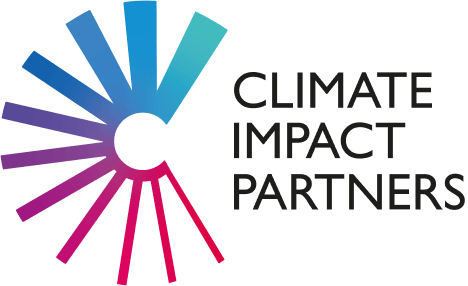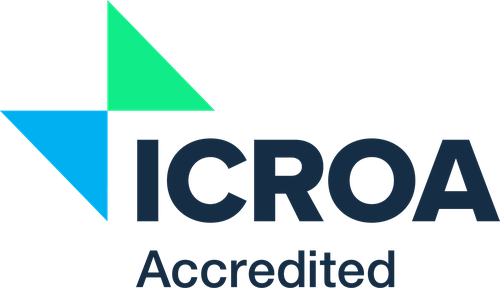We recently spoke to Thomas Viegas, Partnerships Lead at the Taskforce on Nature-related Financial Disclosures (TNFD), who shared his views on the disclosure framework. Disclaimer: Any personal views expressed are not necessarily the views of the TNFD.
This month could mark a turning point in how the private sector addresses the nature and biodiversity crisis. Just last week, the Taskforce on Nature-related Financial Disclosures (TNFD) unveiled its disclosure framework, providing clarity on how companies and financial institutions assess and report their nature-related dependencies, impacts, risks and opportunities.

In a nutshell, who is the TNFD and what is the TNFD framework?
Thomas: The Taskforce on Nature-related Financial Disclosures (TNFD) is a global, market-led, science-based and government-supported initiative to help companies and financial institutions factor nature into decisions. Established in 2021, the Taskforce consists of 40 senior executives from companies and financial institutions globally, representing over $20 trillion in assets under management with direct operations, and value chains in over 180 countries.
The Taskforce’s mission is to develop and deliver a risk management and disclosure framework for organizations - both companies and financial institutions - to report and act on evolving nature-related issues, with the ultimate aim of supporting a shift in global financial flows away from nature-negative outcomes and toward nature-positive outcomes.
Last Monday, the TNFD delivered a set of disclosure recommendations and additional guidance to organizations to aid nature-related disclosures preparation, in part through supporting their identification and assessment of nature-related issues.
What exactly are the TNFD recommendations?
Thomas: The Taskforce’s recommendations provide companies and financial institutions of all sizes, sectors and geographies a risk management and disclosure framework to identify, assess, manage and disclose nature-related issues. It includes 14 recommended disclosures covering nature-related dependencies, impacts, risks and opportunities.
How do they relate to other sustainability related disclosure requirements?
Thomas: By design, the TNFD has built its recommendations and supporting additional guidance on the language, structure and approach of the Task Force on Climate-related Financial Disclosures (TCFD) recommendations, and ensured they are consistent with the International Sustainability Standards Board (ISSB) IFRS (International Financial Reporting Standards) Sustainability Disclosure Standards and the Global Reporting Initiative (GRI) global standards for sustainability impacts.
The TNFD recommendations are structured to allow organizations to get started, building on their climate reporting capabilities over the past decade, and provide a clear path to increase their disclosure ambition over time. This is consistent with Target 15 of the Kunming-Montreal Global Biodiversity Framework (GBF), which recognizes that the incorporation of nature-related issues is new to many organizations, but a rapidly growing strategic imperative.
Why should companies and financial institutions adopt the TNFD recommendations?
Thomas: The evidence is becoming clearer by the day that the degradation of nature, and actions aimed at conserving, restoring and sustainably using it, present significant risks and opportunities for business, finance and society, both now and in the future.
Despite this, only a minority of organizations have been to date systematically assessing and disclosing their nature-related issues. In the past, this has largely been due to the lack of regulation or the limited availability of nature-related tools, metrics and data.
However, corporate reporting of nature-related issues is evolving at pace. Several jurisdictions have – or are developing – nature-related reporting standards and regulations (for example, the EU, India, Brazil). Earlier this year, the ISSB also issued its first two IFRS Sustainability Disclosure Standards, and it is possible that its next priority will be nature (conditional on the outcomes of its recent consultation).
How does the framework align with evolving tools and approaches for measuring nature impact?
Thomas: Improvements in technologies and techniques are also advancing the tools, metrics and data to measure nature impact. Organizations can get started with the identification and assessment of nature-related issues using the data sets and analytic tools available today – with further tools set to emerge.
The TNFD framework has been designed with these developments in mind. The Taskforce’s recommendations have endeavored to strike the best possible balance between respecting the complexity of the science of nature and enabling practical, concrete and cost-effective action by business and finance.
Understanding whether this balance has been struck is vital. The TNFD undertook a global survey of organizations ahead of its final recommendations and found that:
- Of the 239 respondents – headquartered in 36 countries and covering 11 sectors.
- More than two-thirds (70%) thought that they would be able to start disclosures aligned with the TNFD recommendations by the financial year 2025, with 86% by the financial year 2026.
- While there was variation among which recommended disclosure each could start with, the average respondent suggested they would get started by disclosing half (7) of the 14 TNFD recommended disclosures.
What were the key lessons learnt from the 200+ pilot testing organizations of the beta framework?
Thomas: In general, organizations that pilot tested the TNFD framework underscored its effectiveness, and some are now intending to make nature-related disclosures. Some of the insights we gathered were:
- Pilot testing the TNFD framework helped increase organizational and clients’/suppliers’ capacity and knowledge on nature-related issues,
- Better identify organizational gaps in terms of data and processes,
- Better understand the interaction between climate-related and nature-related risks and opportunities,
- Amplify the internal business case necessary for nature-related assessments.
The suite of additional guidance released this month includes a fuller range of case studies and insights from pilot testers.
How can corporates get started with adopting the TNFD recommendations?
Thomas: There is no single way to get started with the TNFD recommendations, every organization is different and will have its own pathway towards adoption - taking the first step is the most vital.
The TNFD has long recognized this, and the Taskforce has produced a suite of additional guidance to help every organization on their path towards adoption. In particular, in collaboration with a range of partner organizations, it has produced ‘Getting Started’ guidance, which includes a set of key steps to consider when getting started and advice on how to address some of the practicalities when preparing to assess and disclose across the TNFD’s four disclosure pillars.
On the climate-nature nexus, the fact that many organizations in recent years have increased their awareness and capacity to assess the implications of climate change provides a strong platform on which to build for nature.
However, it is important to recognize that the identification, assessment and management of nature-related issues is different to climate. Climate change is a global process within one shared atmosphere. While nature-related dependencies and impacts are location specific, and therefore require local, context-specific assessment and responses. Understanding where interactions with nature occur is vital to the identification, assessment and management of such issues.
While over time, companies and financial institutions should ultimately take an integrated approach to identifying, assessing, and responding to climate-related and nature-related dependencies, impacts, risks, and opportunities. Today, they just need to get started with nature, and TNFD recommendations provide a way to that.
How can we effectively communicate the connection between climate- and nature-related disclosures?
Thomas: For climate change and nature loss, the science is clear that the question cannot be ‘either or’ - the climate and nature are inextricably linked. Making nature-related reporting a reality is challenging, but feasible, building on the advances in climate-related disclosures. The TNFD recommendations provide a voluntary practical way for organizations to disclose on their nature-related issues.
It is important to recognize that sustainability reporting needs to be sustainable for organizations. This means that alignment, integration, and streamlining are needed both now and in the longer term. The TNFD recommendations have been designed with this in mind, being consistent with the language, structure, and approach of both the TCFD and the ISSB to enable integrated climate- and nature-related reporting.
Now that the Taskforce’s recommendations are out, what is next for the TNFD?
Thomas: The publication of the Taskforce’s recommendations is naturally a key milestone for its work, but in some ways it is just the beginning.
The TNFD will now work to encourage and scale voluntary market adoption of the TNFD recommendations by scaling-up market awareness and building capacity among organizations. This will involve many aspects including engaging a broad range of relevant stakeholders on the TNFD framework, supporting market capacity building efforts to help adoption, and continuing to advance technical development on nature-related work to inform future updates.
A milestone is always an indication of progress, not the destination. The TNFD will be actively working to embed its work to support organizations as they report and act on evolving nature-related issues, and ultimately help shift global financial flows toward nature-positive outcomes.
Read TNFD’s Getting Started guidance
Read about Climate Impact Partners’ solutions to measure and deliver biodiversity impact
Get in touch
Thomas Viegas is Partnerships Lead for the TNFD. In this role, he is responsible in building and maintaining strategic partnerships and alliances to further the TNFD’s objectives. Prior to joining the TNFD, Thomas was at the Bank of England where he led the Bank’s initial approach and strategy to nature-related financial risks. Thomas was also an Economic Adviser and Finance Sector lead to The Economics of Biodiversity: The Dasgupta Review, based at the UK’s Finance Ministry.
There is no single way to get started with the TNFD recommendations, every organization is different and will have its own pathway towards adoption - taking the first step is the most vital.
Die neuesten Insights von
Climate Impact Partners

Buying Smart: How to Avoid the Carbon Credit Crunch
As carbon markets evolve, demand for high-integrity credits is set to outpace supply as early as 2030—with some buyers already feeling the squeeze.
Weiterlesen
SBTi Net Zero Draft V2.0: Your Key Questions Answered
Climate Impact Partners experts answer key questions on the SBTi's draft Corporate Net Zero Standard V2.0.
Weiterlesen
Navigating the SBTi's Proposed Net-Zero Revisions: Implications for Carbon Credits, Removals, and BVCM
An overview of the key updates from the SBTi’s proposed Corporate Net Zero Standard (V2.0) and implications for carbon credits.
Weiterlesen






















